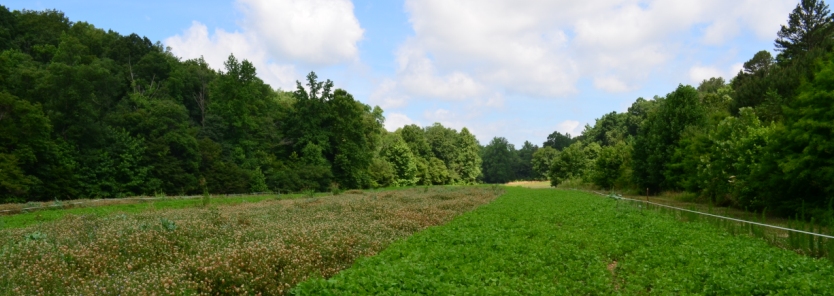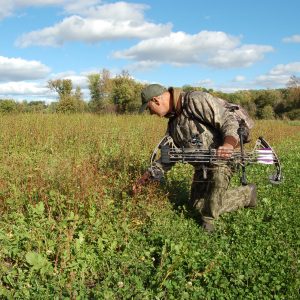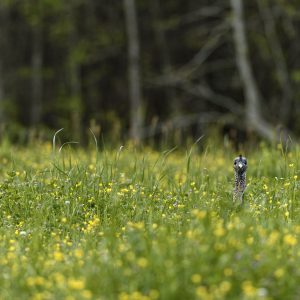One of the most common problems in food plots, especially perennials, is weed competition. Weeds rob your plot of essential nutrients, water, and root space. Given time and opportunity, weeds will quickly mature, produce seed, and overtake a well intended food plot. The use of herbicides is one of the greatest tools a wildlife manager can utilize to keep weeds under control and get the most out of your plantings. Here are a few tips to get the most from your efforts.
- Read The Label-the information on the herbicide labels contain great info and will identify what weeds they control and what crops it is designed to protect.
- Spray when grasses or broadleaf weeds are young and thriving. If you wait to spray when they are tall and mature, the results will often be less than desirable. If weeds are already tall and maturing, mow first and return 7-10 days later to spray the new re-growth.
- Spray in good conditions. Cloudy and still days are best. Windy and rainy days do not make for good conditions to spray in.
- Make sure spraying equipment is functioning properly and carry some spare spray rig parts to the field. There’s nothing worse than having a busted hose or clogged tip in the field and be without the tools to fix it.
- Make sure to add a surfactant or crop oil when called for, many grass specific herbicides do not work well without one.
- For optimal results, use AMS (ammonium sulfate) or add Biologic M.E.E.N Green (a water soluble fertilizer) to your tank mix when spraying selective herbicides. AMS or M.E.E.N Green will increase the effectiveness of the herbicide by helping the weeds readily trans-locate it to the roots for a good kill, at the same time it will foliar feed the plot with essential macro and micro nutrients.
- Know the size of the fields you are going to be spraying so you can apply the appropriate amount of solution. To practice and calibrate your sprayer, find a field and measure it with a GPS or use a range finder to determine the acreage. Fill your spray tank with just water and take note of the speed you travel and the amount of water you apply over the known area. This will help take a lot of guess work on applying the correct amount. Most herbicides work best when 12-20 gallons of water are used over an acre with the appropriate herbicide.
- Another very common problem is the flush of weeds you get after planting warm season annuals such as soybeans, peas, or lablab. Anytime you disturb the ground with a piece of equipment like a disc, harrow, or tiller you are likely to get a fine crop of weeds that germinate from seeds that have been in your soil profile for years waiting on their chance to grow. Many times these weeds will outgrow the crop you have planted and end up choking it out. I typically use this sequence in the spring when planting my warm season annuals, keep in mind that glyphosate (round-up) is a contact and non residual herbicide. If it doesn’t contact something green and growing it is basically in-active. It does not have any residual activity in the soil and will not affect seeds you are preparing to plant. I generally spray the area to be planted after a good portion or all of the plot has a good flush of spring weeds. In the South this is usually around early to mid April. Wait around a week and go in and work the soil with a disc or tiller or whatever your primary tillage equipment is. This disturbance of the soil should create a new flush of weeds over the plot in a relatively short period of time, after I see a good carpet of weeds starting to emerge, I spray again with 41 % glyphosate (generic round-up). Wait just 3-5 days and lightly prepare the top 3-4 inches of soil again and plant. This second spray application seems to really cut down on early weed problems in spring planted plots. Giving the plot you are planting time to get established and canopy to shade the soil will drastically cut down on the amount of weeds that can grow.






